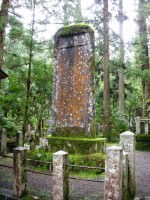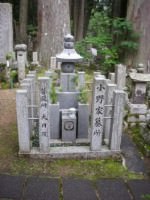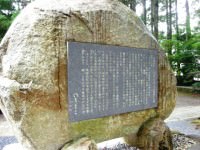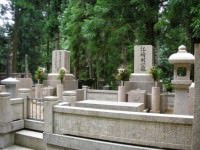

Koji Tsuruta (1924-1987)
Film Actor/Singer Over the course of almost 40 years, Tsuruta starred in almost 260 films. Playing mostly handsome lead roles early in his career, his most famous single role was as Toshiro Mifune’s rival Kojiro Sasaki in the Samarai Trilogy (1954-1956). Mifune playing Musashi Miyamoto, defeated Tsuruta’s character Sasaki in the duel at Ganryu Island, the most famous duel in Japanese history. Tsuruta was also famous for his numerous roles as a yakuza in the “ninkyo eiga” (chilvary films) that were very popular in Japan during the 1960s and 1970s. These films depicted yakuza as honorable outlaws torn between their sense of duty and their personal feelings.
Shiba Ryotaro (1923-1996)
Writer Shiba Ryotaro was a Japanese author best known for his novels about historical events in Japan, as well as his historical and cultural essays pertaining to Japan and its relationship to the rest of the world. One of Shiba’s best known works, Ryōma Coming to Us, is a historical novel about Sakamoto Ryōma, a samurai who lived during the chaotic political period during the Meiji Restoration. Sakamoto Ryoma gradually realized that people needed to realize how much stronger other countries had grown during Japan’s two centuries of national seclusion. Japan was almost powerless in the face of the technology and well-developed industry of the contemporary Western powers. He believed that Japan needed to adopt elements of Western culture to develop into a country that could stand equally among nations of the world. These views were very unpopular with the established leadership in Japan, and made Sakamoto a target of many assasination attempts. Despite his historical significance, Sakamoto Ryōma was not well known in Japan prior to the publication of Ryoma Coming to Us.
Glico
Confectionary Company Not all memorials in the cemetery are for people. There are also many memorials for companies. Glico is a 90 year old confectionary. Their most famous product is Pocky, the Japanese snack food which is a stick-shaped biscuit covered with chocolate. Pocky was bornin in 1966 when Glico decided to cover it’s previosly well-known product, Pretz with a coating of chocolate. The original was followed by “Almond Pocky” in 1971, and “Strawberry Pocky” in 1977. Today, the product line includes such variations as milk, mousse, green tea, honey, banana and coconut flavored coatings, and “Men’s Pocky,” with a dark (bittersweet) chocolate. Other popular products of Glico include Pretz, Almond Chocolate, Caplico, Bisco and curries. For those who have visited Ebisu Bashi next to Dotombori, the “Running Man” neon sign, a famous Osaka landmark is an old trademark of Glico dating back to the 1920s.





